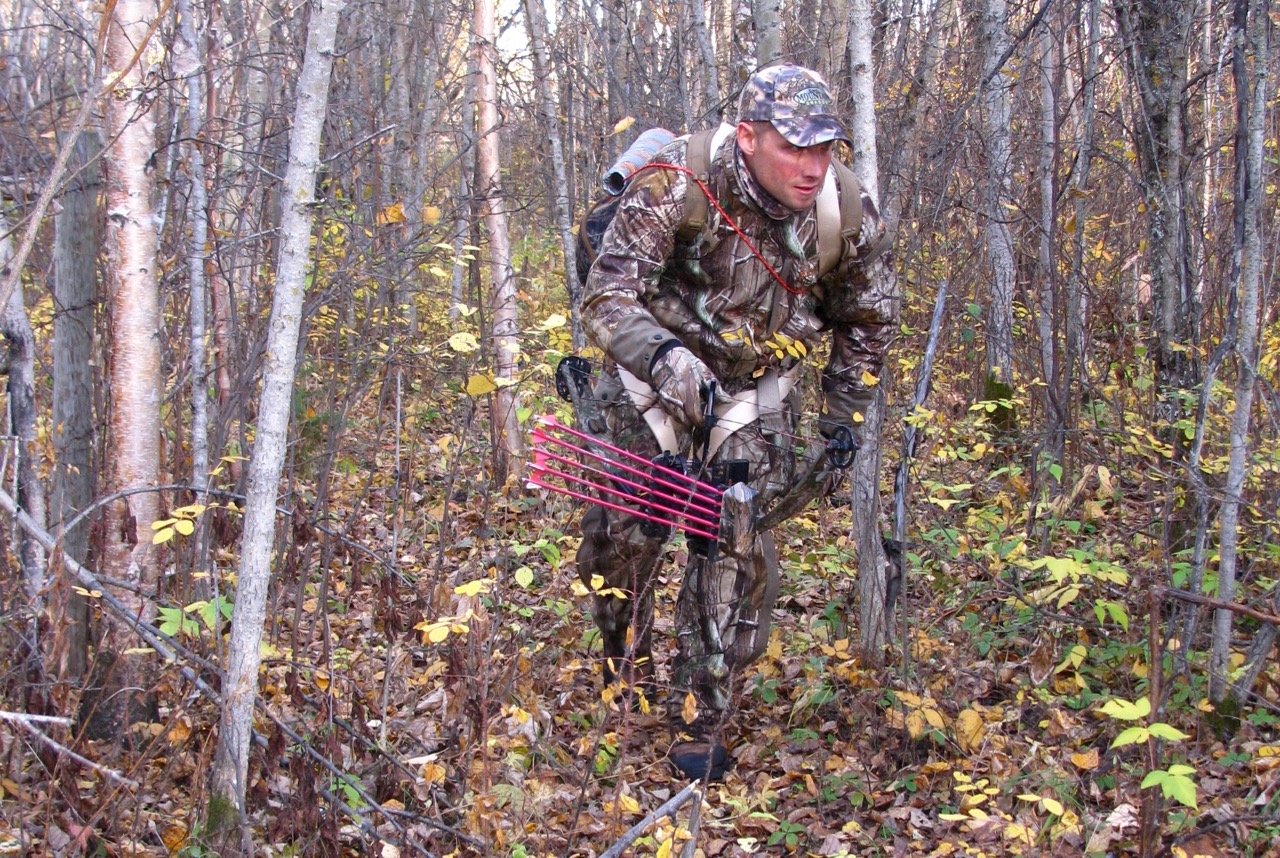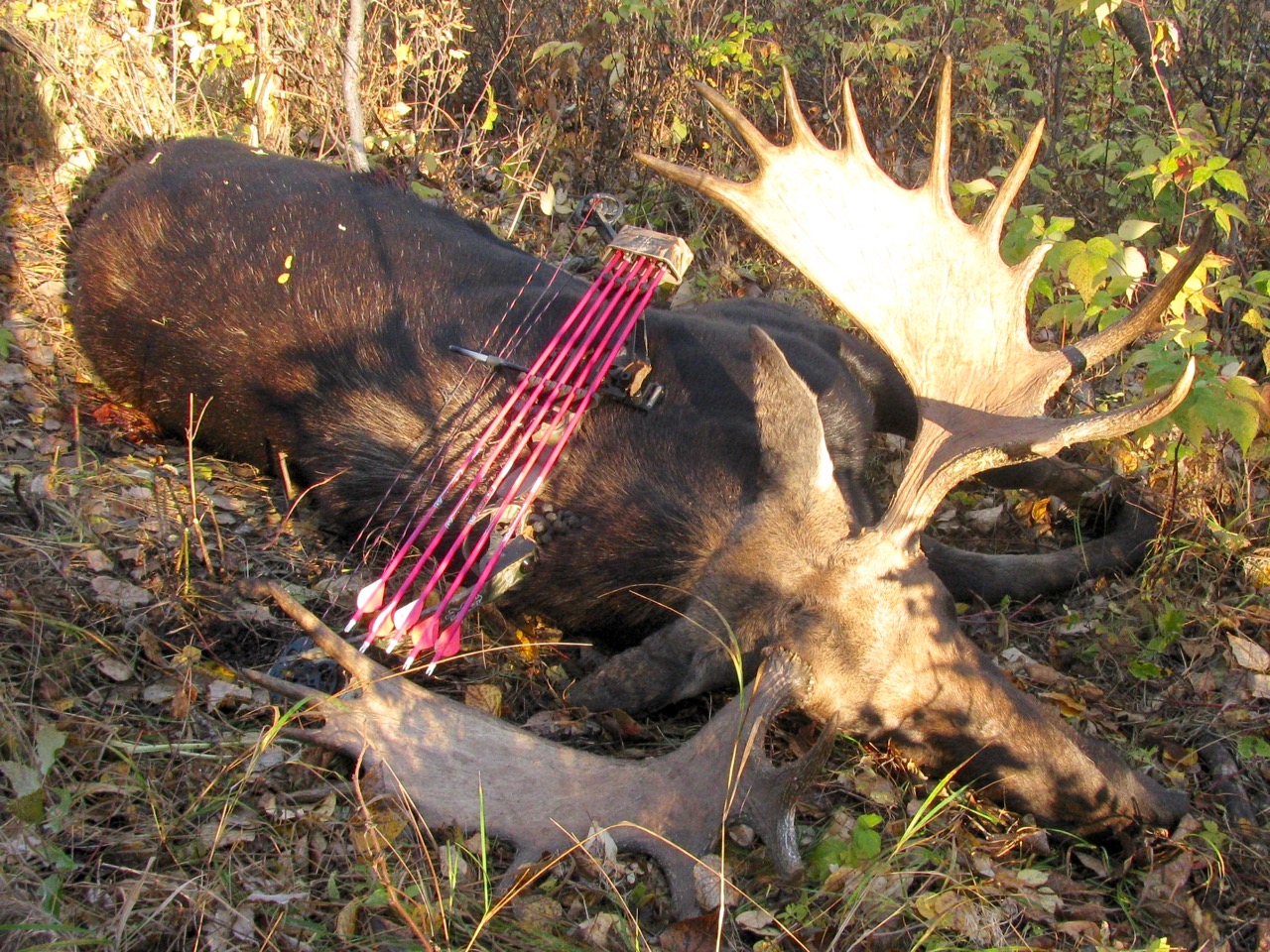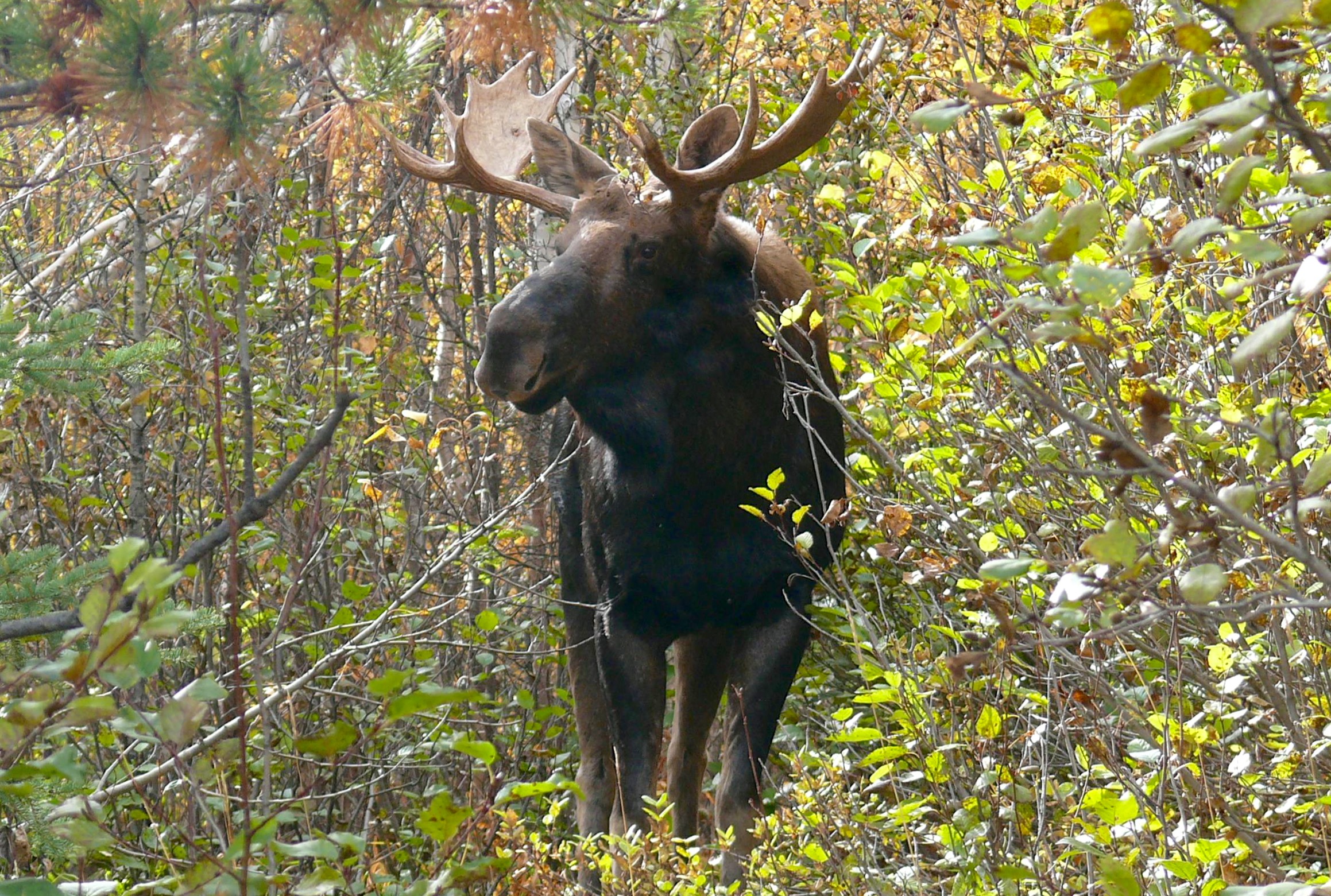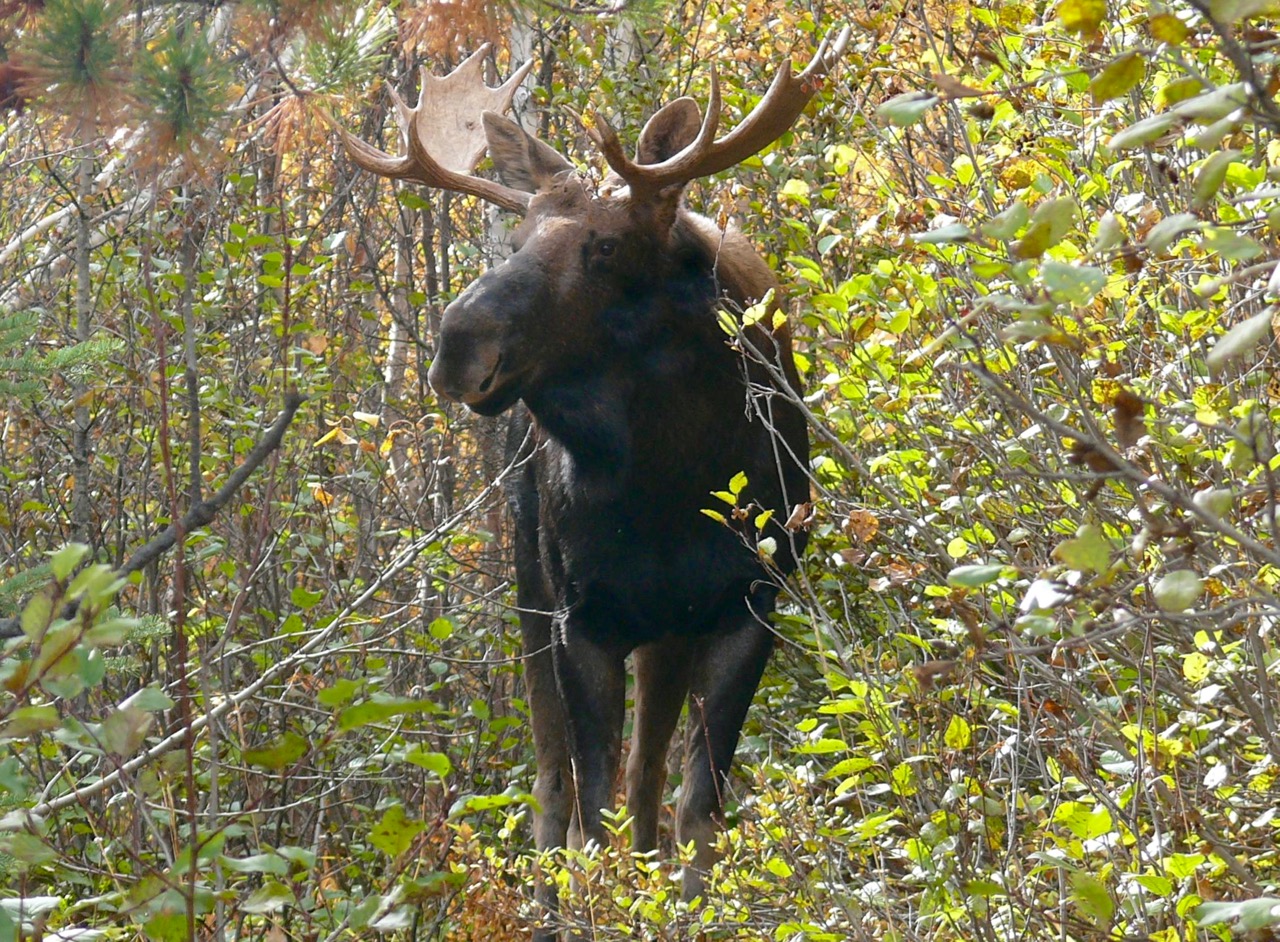Play fight
When a bull moose answers your cow calls but won’t come in, seal the deal by pretending to be a competing intruder
Advertisement
Putting it all together
My successful hunt last fall provides a good example of how all of this comes together. It was late September, and I’d captured several pictures of various moose on my trail camera, which was aimed at a well-used game trail leading to a small, wet, hidden meadow. I’d also found a couple of rut pits while checking the camera, and some freshly scraped saplings and willows.
Advertisement
The morning of the hunt itself was crisp and cool with no wind, making it perfect for calling. I arrived well before first light, quietly walking in a half-kilometre and setting up my cow decoy just off to the side of my treestand. Once my bow sight pins lit up, I started off with a soft, pleading cow call to ensure any nearby bulls wouldn’t be scared off. I’ve never actually had a bull answer this first, soft call, but it’s always worth a try.

Ten minutes later, I called again, increasing the volume to reach out as far as possible. My nasally call echoed through the boreal forest, and a bull immediately responded with a few grunts. Then I heard branches breaking, a sure sign something big was moving through the forest. He sounded roughly a half-kilometre away, but drawing closer.
Then all went quiet, so I made another cow call in the direction I’d last heard him. Again, he responded immediately with his low, monotone grunt. But that was it—he held his ground and didn’t advance. Fifteen minutes later, the same thing happened: I called, and he responded, then went quiet. After an hour, I called in the other direction, trying to sound like a cow moving away from his position. He quickly responded with two or three grunts, but still wouldn’t come in.
Advertisement
After several hours, it was clear we were in a standoff, with the bull stubbornly holding his ground as I pleaded for him to come closer. Since I thought I knew his exact location, I considered climbing down from my stand to stalk him. I figured he’d hear me coming and look my way as I approached, however, taking away any chance of a broadside shot once I saw him. It was time to simulate the sound of another bull moose advancing on the cow.
I made another cow call, then several bull grunts while facing away from the bull’s position. Then I thrashed some tree branches with my scapula, trying to sound like an agitated moose coming in fast and furious. I also slowed the frequency of my grunts down to five seconds, then stopped altogether to let things develop. Soon, I heard branches breaking as he took a few steps closer, definitely curious about this new player moving in on his cow. I waited another 15 minutes, then cow called and grunted again several times.

Again, the bull responded with grunts, but I didn’t hear anything else—until suddenly there he was, his massive black body filling the view to my right. I could not believe how quietly he’d progressed to within 20 metres of my position. Unfortunately, a few trees blocked his view of the decoy, so he didn’t come into my shooting lanes. By then I was getting ready to draw, but I needed him to step out into the clear. Instead, he raked some shrubs with his beautiful antlers, hoping to lure the cow (me) toward him.
Seemingly losing hope, the bull began to retreat. With that, I hung up my bow and breathed heavily into my call, sounding like a cow getting ready to mate, then followed up with a couple of bull grunts. That was it—the bull could no longer take the idea of a competitor breeding a cow in his territory. He stepped out into the clear, saw the decoy and started toward it. At nine metres, I put an arrow through both his lungs, later finding him just a few hundred metres away—finally fooled by my fake foe.
For more moose decoying tips from Alberta contributor Gord Nuttall, go to www.outdoorcanada.ca/moosedecoying.


